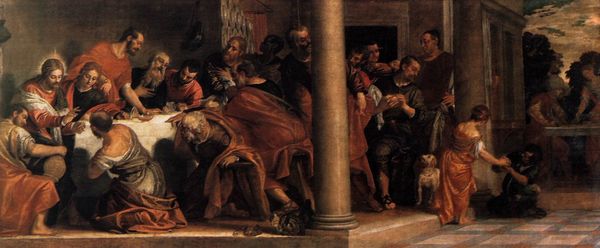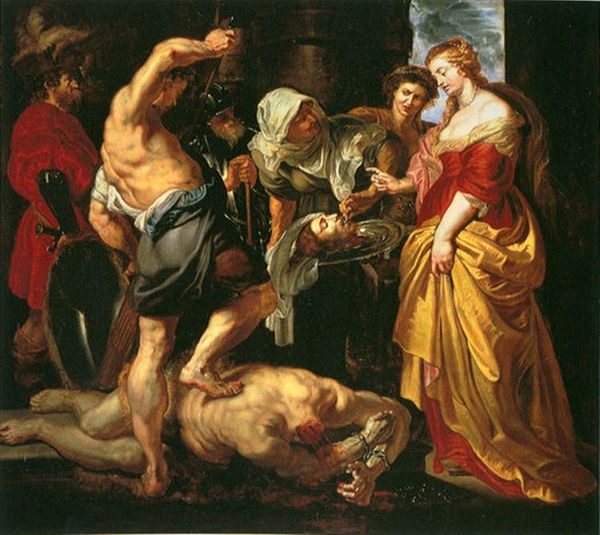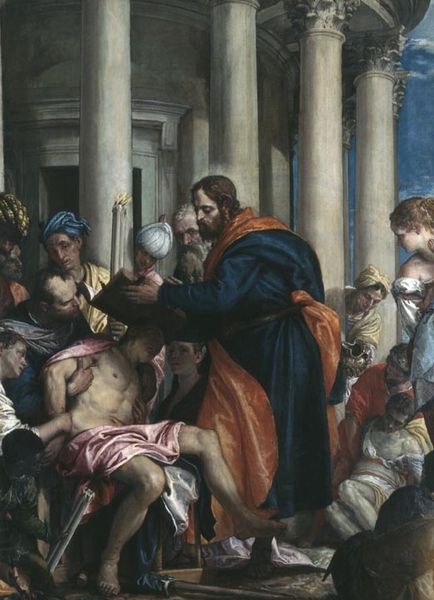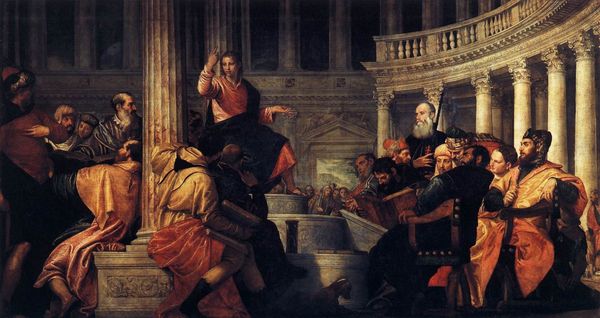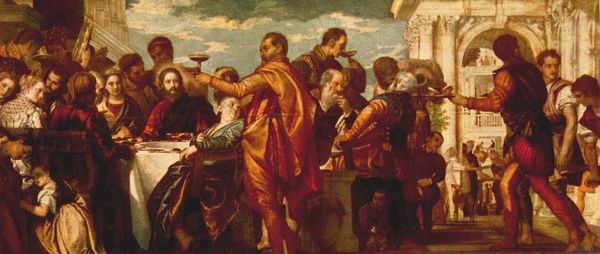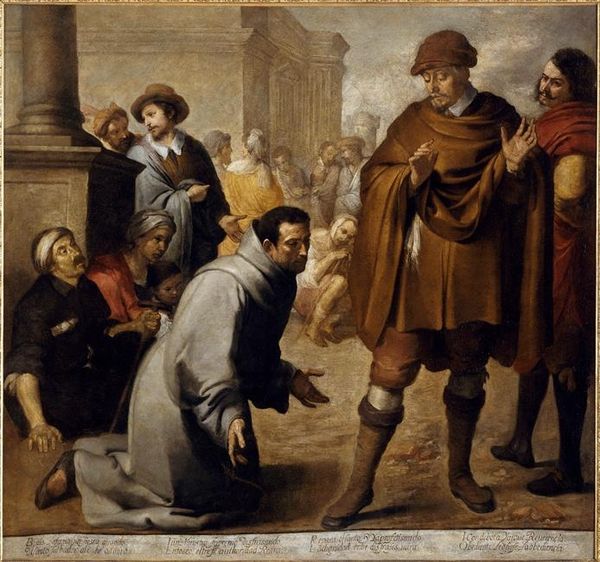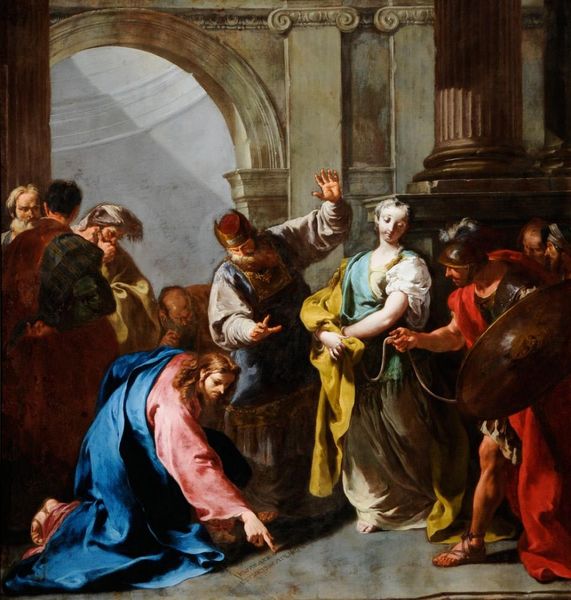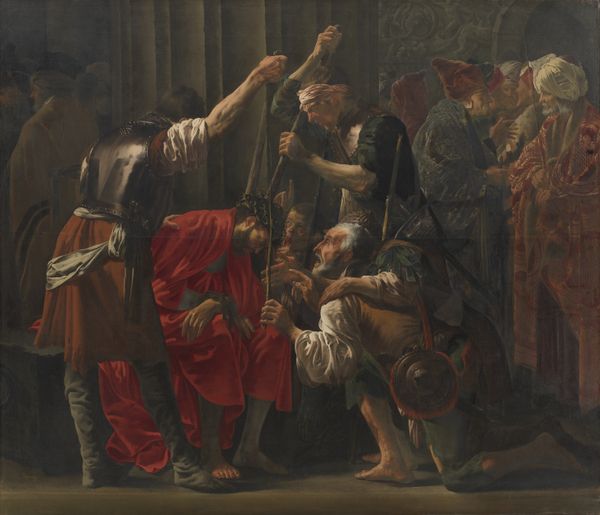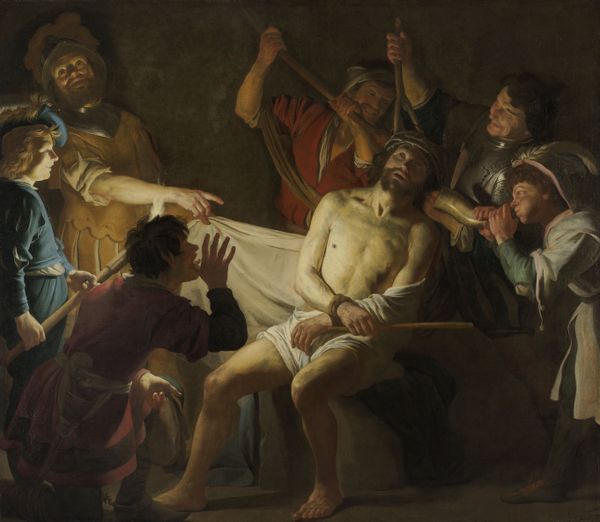
painting, oil-paint
#
narrative-art
#
baroque
#
painting
#
oil-paint
#
figuration
#
history-painting
Copyright: Public domain
Editor: Here we have "Return of the Prodigal Son," an oil painting by Palma il Giovane, currently housed in the Galleria dell'Accademia in Venice. There's something immediately striking about the worn fabric of the prodigal son's clothing—it speaks volumes about his journey. What stands out to you in terms of the materiality or the production of meaning here? Curator: Let's focus on the pigment itself. Look at how Palma il Giovane uses color to differentiate between the figures, especially regarding social class. The father and his attendants are draped in rich reds and golds, achieved through costly pigments derived from sources like lapis lazuli or kermes insects, demonstrating wealth. Contrast this with the son’s meager, torn cloth rendered in duller, less expensive pigments. This wasn't just about aesthetics; it was about signalling material privilege. Does this make you consider how the very materials used create a hierarchy within the scene? Editor: That's fascinating! I hadn't considered the specific pigments and their costs reflecting class. It does make you wonder about the economics embedded within art creation, even back then. How might the artist's own economic conditions or workshop practices have played a role in this? Curator: Palma il Giovane operated within a well-established Venetian workshop system. He would have had access to certain materials and skills, but also constraints dictated by patron commissions. We need to think about the labour involved—who prepared the canvas, ground the pigments, and even assisted in the painting itself? Understanding this reveals the social context of art production and its inherent power dynamics. Editor: So it’s not just about the story itself, but the story of how the materials came together and the labour that produced it. I’ll definitely look at paintings with a new eye, considering the socioeconomic factors woven into the canvas itself. Curator: Exactly. By thinking about material conditions, we gain a much richer appreciation for the historical and social forces at play.
Comments
No comments
Be the first to comment and join the conversation on the ultimate creative platform.

